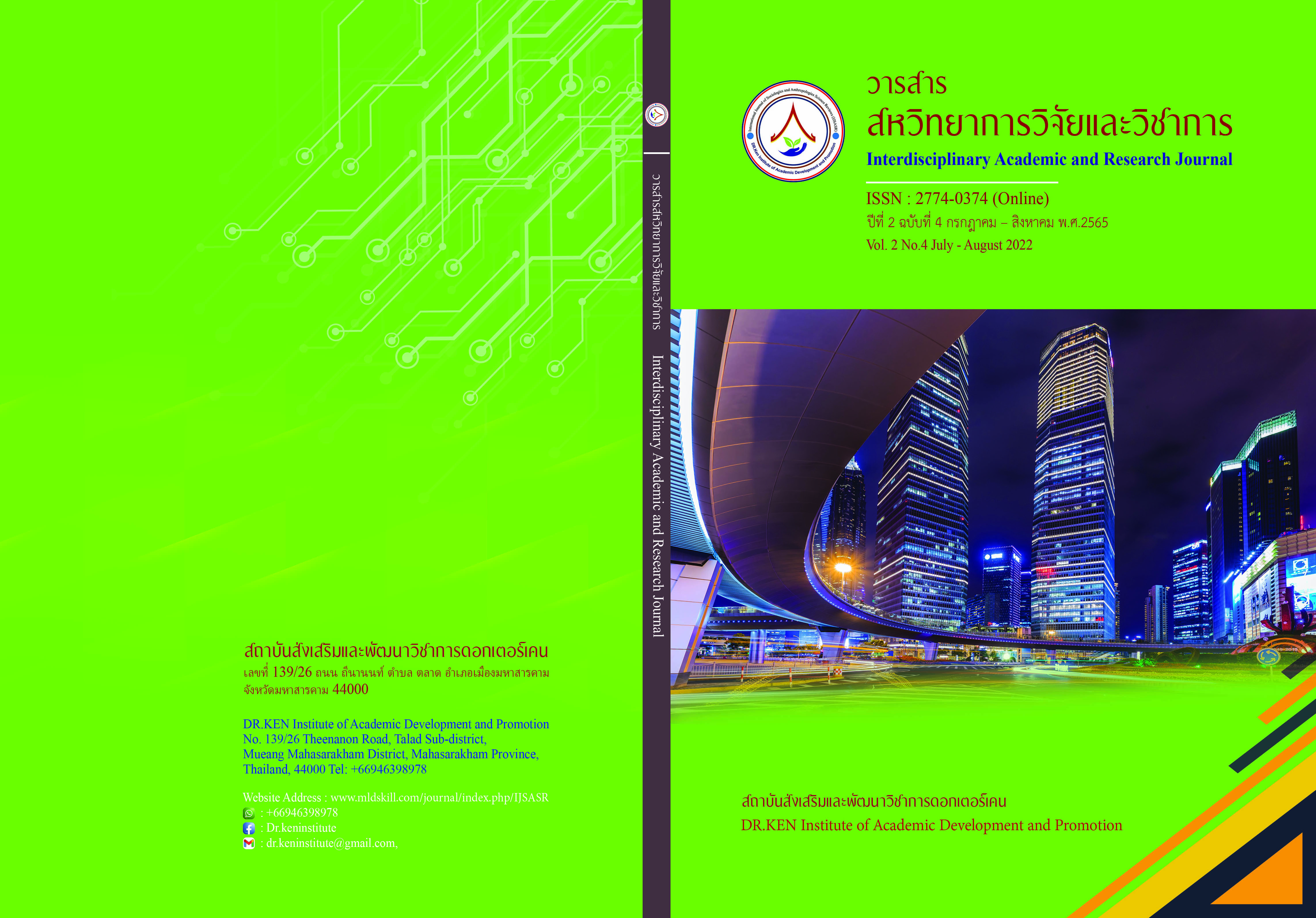Critical Success Factor of Online Learning of Private University in the era of COVID-19
DOI:
https://doi.org/10.14456/iarj.2022.79Keywords:
Successful; , Online Learning; , Private UniversityAbstract
The problems from the spread of Covid-19 from 2020 until now, as a result, students must be studying at private universities online so the purposes of this research were; 1) to study the characteristics of private University students who succeeded in online learning in the era of COVID-19. 2) to study the level of Critical Success Factor of Online Learning of Private universities in the era of COVID-19. 3) To find out the success factors of online learning during the COVID-19 outbreak. This research was quantitative. The sampling, selected from the purposive sampling method, was 225 University students via the internet. Questionnaires were used to collect data. The data received were calculated and analyzed using descriptive statistics and the Confirm factor analysis (CFA). The findings revealed that almost the characteristics of private University students who successfully studied online during the COVID-19 pandemic were female. Studying in the Faculty of Business Administration GPA of more than 2.75, and prefers to use the Zoom application. on time 4pm-8pm, and level of opinion were; the teacher factor was chi-square of c2/df=1.21, P=0.815, GFI=0.989, AGFI=0.966, NFI=0.978, IFI=0.988, CFI=0.984, RMR=0.003, RMSEA=0.012, and each of these variables were consistent with the empirical data.
References
Almaiah, M.A., Al-Khasawneh, A., Althunibat, A. (2020). Exploring the critical challenges and factors influencing the E-learning system usage during the COVID-19 pandemic. Educ. Inf. Technol. 25, 5261–5280.
Alqurashi, E. (2016). Self-efficacy in online learning environments: a literature review. Contemp. Issues Educ. Res. 9 (1), 45–52.
Baber, H. (2020). Determinants of students' perceived learning outcome and satisfaction in online learning during the pandemic of COVID-19. J. Educat. e-Learn. Res. 7 (3), 285–292.
Demuyakor, J. (2020). Coronavirus (COVID-19) and online learning in higher institutions of education: a survey of the perceptions of Ghanaian international students in China. Online J. Commun. Media Technol. 10, e202018.
Den Hertog, P. (2010). Managing service innovation: firm-level dynamic capabilities and policy options. Utrecht: Dialogic Innovatie & Interactie.
Hostify. (2008). Blog. [Online] Retrieved from http://hostify.com/category/blogmarketing/.
Li, S.W., Wang, Y., Yang, Y.Y., Lei, X.M., Yang, Y.F. (2020). Analysis of influencing factors of Anxiety and emotional disorders in children and adolescents during home isolation during the epidemic of novel coronavirus pneumonia. Chin. J. Clin. Hepatol. 28 (1), 1–9.
Mote, R. (2020). COVID-19 coronavirus. Faculty of Medicine, Ramathibodi Hospital Mahidol University.
Osmani, F. (2021). Analysis of Students' satisfaction with virtual education in Medical Science University during the pandemic outbreak of COVID-19. Int. J. Assess. Tools Educat. 8 (1), 1–8.
Positioningmag. (2014). Mega digital marketing trend 2012. [Online] Retrieved From http://www.positioningmag.com/magazine/details.aspx?id=93821. [22 February 2022]
Rajraksa, S. (2020). Covid 'Creates New Economic Normalization to a Turning Point 'Global Supply chain. [Online] Retrieved From https://www.bangkokbiznews.com/news/detail/875619. [22 February 2022]
The Information Center for COVID-19. (2022). Report of viral infection COVID-19. [Online] Retrieved From https://www.youtube.com/watch?v=vW0NlOWFEBg. [22 February 2022]
Wanitbuncha, K. (2014). Structural equation modeling analysis by AMOS. 1st Edition. Chulalongkorn University Press.
Zimmerman, W.A., Kulikowich, J.M. (2016). Online learning self-efficacy in students with and without online learning experience. Am. J. Dist. Educ. 30 (3), 180–191.
Downloads
Published
How to Cite
Issue
Section
License
Copyright (c) 2022 รุ่งโรจน์ สงสระบุญ, สกุลกาญจน์ ชัยจริยาเวทย์, ปทิตตา โอภาสพงษ์, บุศรา นิยมเวช, จิตระวี ทองเถา

This work is licensed under a Creative Commons Attribution-NonCommercial-NoDerivatives 4.0 International License.
Copyright on any article in the Interdisciplinary Academic and Research Journal is retained by the author(s) under the under the Creative Commons Attribution-NonCommercial-NoDerivatives 4.0 International License. Permission to use text, content, images, etc. of publication. Any user to read, download, copy, distribute, print, search, or link to the full texts of articles, crawl them for indexing, pass them as data to software, or use them for any other lawful purpose. But do not use it for commercial use or with the intent to benefit any business.
















.png)


